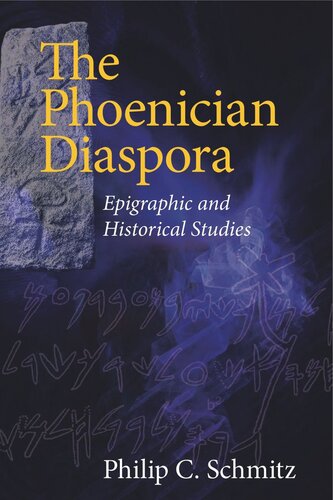

Most ebook files are in PDF format, so you can easily read them using various software such as Foxit Reader or directly on the Google Chrome browser.
Some ebook files are released by publishers in other formats such as .awz, .mobi, .epub, .fb2, etc. You may need to install specific software to read these formats on mobile/PC, such as Calibre.
Please read the tutorial at this link: https://ebookbell.com/faq
We offer FREE conversion to the popular formats you request; however, this may take some time. Therefore, right after payment, please email us, and we will try to provide the service as quickly as possible.
For some exceptional file formats or broken links (if any), please refrain from opening any disputes. Instead, email us first, and we will try to assist within a maximum of 6 hours.
EbookBell Team

4.3
68 reviewsIn this approachable and articulate study, Philip C. Schmitz offers close interpretations of six ancient texts, four previously published Phoenician and Punic inscriptions and two Phoenician inscriptions published for the first time. The author selected the previously known texts because readings of their letters and interpretation of their grammar and syntax are not yet well established. Each of the selected texts stands as an original source concerning Phoenician settlement in the western Mediterranean, Phoenician activity in Egypt, or the economic life and religious beliefs and practices of ancient Carthage.
Chapter 1 rapidly surveys the history of Phoenician-Punic epigraphy and offers a limited inventory of recent publications of epigraphic texts. Chapter 2 undertakes a new reading and translation of the Phoenician stele from Nora, Sardinia (CIS I 144). Chapter 3 edits and translates the larger Phoenician inscriptions from Abu Simbel, in Egypt (CIS I 112). Chapter 4 concerns the paleographic analysis of selected Phoenician graffiti from Tell el-Maskhuta. Chapter 5 publishes an overlooked dipinto inscription on an amphora excavated at Carthage. (An appendix by Joann Freed contextualizes the amphora.) Chapter 6 takes a text-critical look at CIS I 6068, an enigmatic Punic inscription on lead, thought since its discovery to be a curse text. Schmitz argues that it is not a curse but a quittance for debt. Chapter 7 is a new reading and translation of CIS I 6000bis, a Punic epitaph from the Hellenistic period of Carthage.
Among the features of this book that may interest students and scholars are: new translations and interpretations of important inscriptions the translation and interpretation of which have been disputed; previously unpublished photographs of inscriptions, illustrating difficult readings; author’s hand drawings of difficult readings; and grammatical analysis with reference to other known texts and standard reference works.